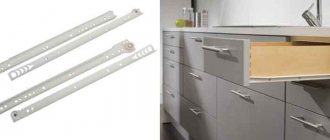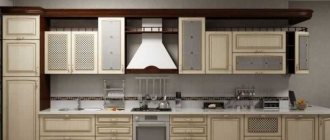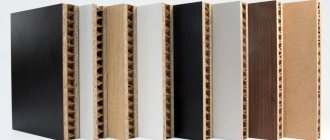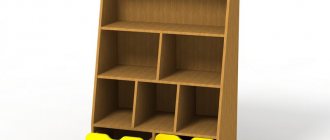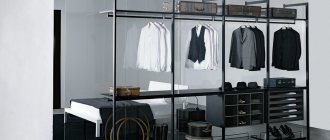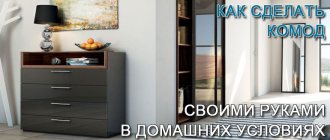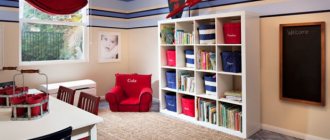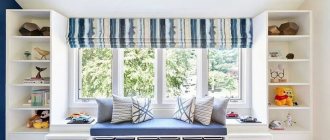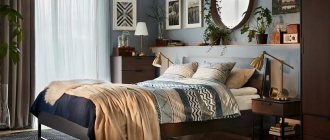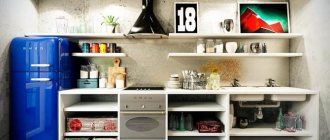There is a permanent lack of space in the kitchen to place food, utensils, and kitchen items that are used when preparing food or during meals. Even the happy owners of spacious premises sigh sadly, looking at the orderly rows of blanks or the next ceremonial service. What can we say about tiny kitchens?
It is not surprising that experienced housewives, already at the stage of creating a kitchen project, try to make full use of all the available space. Retractable structures help to distribute the entire household “on shelves” and create a convenient and ergonomic storage system in the kitchen. If you choose the right sizes and shapes, arrange them taking into account the habits of the housewife and the types of stored property and products, you get an excellent kitchen set that provides maximum comfort while working in the kitchen.
Why do you need drawers in the kitchen?
The history of drawers goes back centuries. Already in ancient times, ancient people appreciated their practicality, the ability to sort small things and keep them safe and sound. Accordingly, in the kitchen, bedside tables and dining tables with drawers appeared along with these furnishings. It was convenient to store cutlery, napkins and other small items in them.
The design of the boxes did not offer any variety. They were made from thin boards, and later from plywood and chipboard, equipped with cut grooves. Special slats-runners were attached to the sides of the cabinets, along which the retractable drawers slid. This system was not very convenient. A box that was pulled out too much remained in the hands or fell, spilling out all the contents. As soon as the tree swelled or dried out, the boxes began to get stuck, and as the runners wore out, they began to fall.
However, progress does not stand still. Modern retractable designs delight with their diversity and carefully thought-out opening and closing mechanisms. Many products are equipped with closers and stops that prevent the box from being easily pulled out of its fastenings. And then common sense and the laws of ergonomics came to the aid of housewives.
It has long been noticed that in a dimly lit room it is very difficult to find anything on the lower shelves of cabinets or shelving. Even in bright light the procedure is difficult:
- To see the contents of the shelf, you need to bend over or kneel down. Often it’s just to climb headfirst into a cabinet or cupboard;
- objects located in the depths, near the back wall, are almost impossible to get out without first taking out all the other things;
- To place a large item, you have to take out all the other utensils. The same inconveniences arise if you need to place or put a rarely used item further away, against the wall.
The standard gap between shelves in closed cabinets is 30-40 cm. It makes no sense to reduce it, since searching for the items stored in it in this case will resemble a complex quest. However, not all kitchen utensils require such a height for storage. Folding in stacks and tiers is not always appropriate or possible.
And gradually, storage systems with retractable structures began to replace the usual cabinets and shelves. They can be varied not only in depth and width, but also in height. Create multi-tiered structures from them, and place them in the most inconvenient, unexpected places, where it is not possible to use traditional shelves.
Thanks to the introduction of modular sets and custom-made kitchen furniture, thoughtful storage systems into the design, space in the room is significantly saved. It becomes possible to place a maximum of things and products in a limited area and distribute them into categories.
How is this furniture arranged?
Pull-out kitchen cabinets are multifunctional and versatile products that save a lot of free space.
The main requirement for kitchen furniture is free access to things. This figure is highest for kitchen drawers. Wall cabinets save space. However, getting something from the far corner of such a kitchen cabinet is problematic without using a stool. Drawers are more functional in this regard. They are at hand level, always fully visible. Losing an item in them is problematic.
The most convenient way to place kitchen utensils is to arrange them in drawers
Modern pull-out systems are functional structures placed inside standard floor-standing and wall cabinets. They are made from common materials used to make kitchen furniture. Metal, plastic, wood, artificial wood boards can be used. The drawers move along special guides. They require careful care. Guides are the first to fail during long-term use.
Functional kitchens involve using the maximum amount of space using retractable structures
Storage systems can have different dimensions and different purposes. There are special designs for bottles, bread, dishes, and other household items. They don't take up much space. Thanks to the special structure, they can significantly increase the capacity of the cabinets.
The most functional include designs in which, when opened, all internal drawers roll out simultaneously
Methods for arranging retractable systems in the kitchen
Retractable models designed using advanced technologies have a wide variety of designs. Everything is done to make the most of the kitchen space, including narrow partitions, space under the windowsill and sink, corners and walls. No one is surprised anymore by narrow and wide pencil cases, divided into cells, for small things. Or tall structures with shelves for spices, oils, bottles and jars built into the gap between the pencil case and the refrigerator.
Retractable systems are available in three main ways.
Nuances of the storage system
The main principle of arranging things in the kitchen is to put everything you need closer and what you use less often is further away. Utensils and utensils for daily use, spices and seasonings are usually located above and below the work surface. The countertop itself should be empty and located between the stove and the sink.
For storage, built-in elements in furniture (most often in kitchen units), as well as a variety of boxes, baskets, and trays are used. Professionals advise giving preference to one large drawer/box rather than two smaller ones. This way the interior space will be used more effectively.
It is better to hide similar items or equipment with the same functionality in one place. When storing food, you need to familiarize yourself with the product environment, choosing the right container. Some fruits and vegetables may require special handling.
Horizontal arrangement of retractable systems
These include both familiar drawers, familiar from childhood, and more intricate designs:
- shallow but wide pencil cases built under the edge of the sink or hob. Their advantages are the variety of shapes and the ability to extend to the very end, revealing a view of the entire contents;
- several drawers or grids hiding behind one cabinet door or the elongated front of the bottom, largest drawer;
- grids and carousel mechanisms made of plastic and glass, which are built into cabinets.
Horizontal drawers are built not only into the lower tier of kitchen cabinets. Often, a tall and deep cabinet-cabinet is allocated for this design, which saves space. Pull-out systems are also located in the lower part of hanging cabinets, under large household appliances.
How to use the corner zone
Every kitchen has corners. There is no need to leave them empty. The following options are available:
- In the corner area we install a separate rack, cabinet or pencil case. In some cases, even just shelves will do.
- In the headset, corner retractable systems are built into the design. Such boxes open using two sides of the corner at once. They are roomy and stable. Suitable for storing both light and heavy items.
- Carousel design. It consists of several sections that rotate 270 degrees around the mount. Suitable for any angles. Installed both on the inside of the furniture and on the outside.
- “Magic Corner” mechanism. It is attached to the door of a corner box, consists of several sections, and rolls out in a certain direction. A useful idea, but expensive.
Vertical arrangement of retractable systems
These designs are also called “bottle holders,” but you can store anything in them, from cans of cola or vegetable oil to household chemicals and cleaning supplies. They are distinguished by their small width and considerable height.
This is an excellent, optimal option for a small kitchen or a room with a non-standard layout. Manufacturers often offer ready-made kitchens with vertical structures built into lower or upper cabinets. They also allow you to close the gaps between cabinets and walls or the refrigerator in case of an error with the dimensions or the purchase of a modular kitchen. Separate systems on wheels are also sold.
Kitchen without wall cabinets
If the room is spacious and you don’t need to save it, then a kitchen without top drawers will look great. The absence of wall cabinets is one of the modern design trends. Typically, island kitchen models are chosen for it, in which part of the set is separated from other furniture.
A kitchen without top elements looks stylish and impressive. No need to worry about running out of storage space. In addition to wall cabinets, there are plenty of ideas on where to hide items.
- With such a kitchen set, instead of the top drawers, you can install a shelf, hang a picture, or decorate it with other decor. Different types of railing systems would also be appropriate.
- With them, a pipe is attached to the wall above the tabletop. Holders, hooks, or the kitchen utensils themselves are attached to this pipe.
- With an island model, the set, additional storage boxes are also made on the island.
Location of retractable systems in corners
To make full use of the available space, owners choose “L”-shaped and “U”-shaped, broken kitchen layouts. And the question immediately arises: how to use angles most efficiently? Drawers of a special design allow you to solve the problem brilliantly.
The curved facade and the figured lower part of the drawer completely follow the line of the set, without breaking out of the general style. And the quality of the arrangement and storage of kitchen utensils remains high, allowing you to easily add or remove the necessary items.
Kitchen units with top drawers
Such models are widespread. There are many photos on the Internet or furniture catalogs with different ideas for the arrangement of top drawers for the kitchen. Often it is in one of them that an integral element of the kitchen is located - a dish dryer.
It should be spacious, durable, and consist of several tiers. Other boxes are used for storing food, allocate space for a bread bin, install a microwave oven and carry out an exhaust hood. On top of the cabinet you can put boxes with spare dishes and items that the owners rarely use.
There are different mechanisms for how the cabinet will open. There are also options with and without handles.
A set with several upper modules is an excellent solution for small kitchens or studio apartments.
Main types of guides
Products are:
- roller;
- fully retractable;
- with the presence of a closer;
- reverse action;
- hidden;
- metaboxes, tandemboxes.
Roller
After their appearance they quickly became popular. Currently, most pieces of furniture are equipped with them. Mounted on both sides of the boxes in special holes.
Fully retractable
It is based on a ball bearing. They provide smooth, and most importantly, complete opening. Requires some effort during operation. Designed for different loads.
With door closer
The design of such guides is similar to the previous ones. The difference lies in the presence of elements such as dampers and closers. All this is necessary for silent use of sliding wardrobe drawers. They act as a shock absorber if excessive forces are applied when closing.
Reverse action
They are almost no different from the previous ones with a closer, except that when opening a drawer you need to press it, similar to pressing a button. No handles required.
Hidden mounting
They can be equipped with both closers and reverse action systems. Placed on the back of the bottom of the box. They are reliable. Provide soft closing, smooth running, no noise.
Metaboxes and tandemboxes
Such systems have many advantages: the ability to withstand heavy loads, aesthetics, and good performance. However, they are characterized by the complexity of their design, and therefore are the most expensive of the existing ones. Most often used in the production of luxury furniture.
Do-it-yourself features
Making drawers with your own hands is quite simple, following the detailed instructions presented below. Many people will find it easier to purchase ready-made products. However, the required size is not always available.
Making furniture yourself has its own characteristics. First you need to clearly decide on the materials. An excellent option would be to purchase the following elements: chipboard for the sides, fiberboard for the bottom, full roll-out guides. This is an excellent set of materials from which you can build a good-quality box.
The next stage is creating a graphic plan. On a regular piece of paper you need to draw the components of the future product, note their sizes and attachment points. This plan will help complete the assembly as quickly as possible. The most difficult of all of the above is calculating sizes. It is difficult to determine the required dimensions by eye. Incorrectly selected drawer sizes will significantly complicate the assembly and operation process.
Calculation of parameters
Drawing for making a retractable furniture drawer
Designing drawers is not difficult. First you need to calculate the required width. It should be 26 mm less than the width of the cabinet body - its internal opening. There should be about thirteen millimeters left on each side to install the guides.
Next you need to find out the length. It will depend on the depth of the cabinet. This parameter is required when selecting guides. They come in different lengths: from 250 to 800 mm. You need to calculate the length of the products in advance, only then buy guides for it. We measure the depth of the cabinet with a regular tape measure. Don’t forget to leave a few tens of millimeters in reserve, depending on the design features of the furniture. Due to the standard dimensions of the guides, sometimes it is necessary to slightly reduce the length of the drawers.
Now is the time to decide on the height of the sides. The dimensions of the sides depend on the furniture design of the cabinet. In the production of furniture products, the rule is that the height of the drawer should be 40-50 mm less than the height of the facade. There are no reasons to deviate from this rule. The space left will provide an opportunity to correct errors and correctly adjust the operation of the finished product.
Tools, materials
To assemble drawers, you need to prepare the following list of tools and materials:
- drill (sometimes it can be replaced with a screwdriver, but you need a very powerful screwdriver);
- an electric jigsaw (it will allow you to cut chipboard as efficiently as possible, eliminating damage and chips);
- ruler;
- construction corner;
- rag;
- knife;
- pencil;
- roulette;
- nails, screws, fasteners;
- guides;
- the main material for the manufacture of the structure.
When purchasing slats and structural elements for future drawers, you need to take into account several important criteria. The first is strength, high quality. Materials must withstand loads and not lose their qualities after several years of use. The second criterion is resistance to damage. The peculiarity of such boxes is their frequent use. Pulling out the structure can easily cause minor damage. Durable material must withstand small impacts and collisions with the structure of the cabinet.
Installation options
When choosing new furniture, it is not always possible to take literally everything into account.
Therefore, sometimes you have to deal with situations when the assembly has already been completed, but something is missing. For example, drawers.
As a result, we will highlight 2 options.
See also
Assembling wardrobe doors with your own hands: easier than you thought
- Installation in a ready-made cabinet . The fact that the furniture has already been assembled does not exclude the possibility of installing drawers in the wardrobe. To do this, just choose a suitable place, fix the guides on the side walls, and install the block itself on them;
- At the planning stage . This is optimal. When making a calculation or even a sketch of a wardrobe, you can foresee the presence of a retractable niche in the required quantity and with the specified dimensions.
Now take a look at the situation.
The advantage of drawers is that they can be easily installed in already assembled furniture.
Where else to hide inventory
In addition to the set and table, there are non-standard storage spaces in the kitchen.
- Kitchen sofa with drawer
- Ottomans
- Wall hooks
- Open shelves
- Additional cabinets and shelving
- Allocation of space for a separate storage room
Proper organization of a storage system in the kitchen is a combination of functionality and aesthetics. The main elements are cabinets, boxes, and other containers.
You can either buy ready-made drawers for the kitchen or place an order for individual sizes. If you think everything through well, everything in the kitchen will always be at hand, and rarely used equipment will be reliably tidied up.
Roller guides and their “convenient” brothers – metaboxes
The advantage is simplicity, low cost, ease of installation, the design is such that the box closes under its own weight - the last few centimeters of closing are downhill. Thanks to this, such guides have become very widespread. The photo of the metabox clearly shows which part of the guide is intended for what. One is attached to the furniture wall (small parts in the photo, load-bearing), the second is attached to the drawer structure. In the case of a metabox, the second part of the set forms the entire side wall of the box. A box with roller guides installed looks like this
However, the main disadvantage of this type of guide is incomplete extension. The drawer can be safely pulled out to approximately 75% depth. Let's see what problems most often arise with such guides. Naturally, we will assume that everything was normal in the “freshly purchased” furniture.
Incorrect installation
This problem is usually diagnosed immediately, even before purchase. A box with a roller guide correctly installed according to the technical gaps moves smoothly, it has a fairly small horizontal play. It is easy to check - try to “sway” the almost closed box left and right by the handle. If there is more than three to five millimeters of play, the installation is incorrect. This may be caused by errors in the dimensions of parts during design, or it may be a technological error in the guide itself. It is no secret that in the modern furniture market there is a sea of small firms that save on literally everything. And cheap guides have questionable gap thickness.
Over time, this problem may arise due to deformation of the structure. A heavily loaded furniture box will become deformed if it is made from a slab of improper thickness. Again, the manufacturer saved and used the material without thinking about the safety factor.
Problems caused by changes in technical clearance are difficult to cope with. Here you already need to intervene in the design, this can be done in 90% of cases and is not very difficult, but this is another rather voluminous topic.
If the drawer does not close on its own when pushed in under its own weight, this is an incorrect installation of the supporting part of the guide. Most often it is not installed horizontally. There is no need to touch the front part during this repair - we don’t want to mess with the appearance of the drawer gables. We unscrew the fasteners - except for one point near the very front roller, align them, and screw them into place. We do this with part of the guide, which is located on the furniture wall.
Excess load
This problem is not as rare as it might seem. The reasons can be either banal, like “the manufacturer saved money” or “well, they put a lot of stuff in,” or non-standard - children simply love to climb the handles of dresser drawers as if on a ladder or use them as a support to climb higher. And since the last thing people save on now is the handles, the guide suffers.
The problem can be solved in two ways. The main symptom is that the front wheel of the supporting part of the guide, the one on the furniture wall, “twists” - the plane ceases to be vertical, the metal in the mounting area is deformed and the wheel begins to catch on the second guide. You can return the wheel to its original position. There is no need to hit with a hammer, the roller can simply be split, but with the help of a vice, holding the bushing, you can return the part to its original position.
However, more often this problem is caused by the manufacturer. There are two main applied standards for metal thickness for such guides - 0.5 and 1 mm. The manufacturer could simply save money. Replacing the guides with thicker ones is not a problem - all fastener locations match. Simply remove the old ones and replace them with new ones.
The older brothers of the roller guide – metaboxes – have the same “diseases”. If it seems to you that this will not help, replace the roller guides with telescopic ones. This is quite easy to do. Below we will talk about roller guides.
Exceeding the effective service life
There's nothing you can do about it. The rollers are plastic and will simply wear out over time. Backlash appears, drawers no longer open so confidently. There is only one way out - replace it. You can, of course, use silicone lubricants for a while, but this will not solve the problem.
Varieties
Chipboard drawer
Chest of drawers made from furniture board
Spacious drawers are made in different sizes, shapes, and types. It is simply impossible to list all the variety of types developed by furniture technologists. Let's look at the types of such furniture, depending on the two most common classifications, in the table.
| Classification feature | Kinds |
| Case material | Chipboard. Cheap material, easy to process. Elements made from chipboard can last a long time with proper fastening and handling. |
| Furniture panels. Sold ready-made. They are distinguished by high strength and have sufficient density. Panels are more expensive than chipboards and last longer. | |
| Guides | Roller. The most popular type. Roller guides are inexpensive, have a reliable mechanism, and a simple design. |
| Telescopic. There are guides with full rollout and incomplete rollout. The first ones are more practical and allow you to fully use the space. These guides are highly reliable. They are able to withstand a lot of weight - about forty kilograms, and are more expensive. | |
| Wooden planks. The most budget-friendly, simple option. Guides of this type can be made on your own from ordinary wood. They can be used to install small drawers. |
Roller guides for partial extension drawers
Full extension telescopic slides
Rails made of slats for drawers
